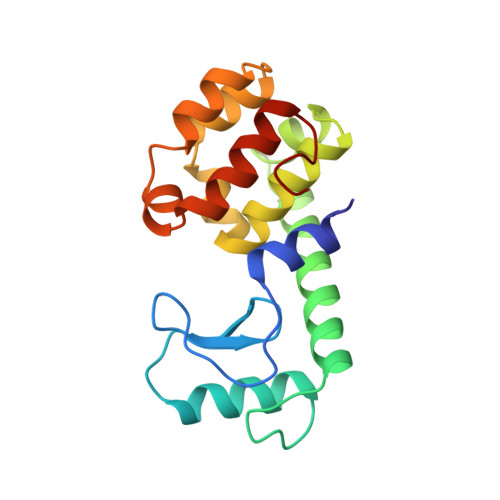Use of a non-rigid region in T4 lysozyme to design an adaptable metal-binding site.
Wray, J.W., Baase, W.A., Ostheimer, G.J., Zhang, X.J., Matthews, B.W.(2000) Protein Eng 13: 313-321
- PubMed: 10835104
- DOI: https://doi.org/10.1093/protein/13.5.313
- Primary Citation of Related Structures:
1EPY, 257L, 258L, 259L, 260L - PubMed Abstract:
It is not easy to find candidate sites within a given protein where the geometry of the polypeptide chain matches that of metal-binding sites in known protein structures. By choosing a location in T4 lysozyme that is inherently flexible, it was possible to engineer a two-histidine site that binds different divalent cations. Crystallographic analysis shows that the geometry of binding of zinc is distorted tetrahedral while that of cobalt and nickel is octahedral. Insofar as spectroscopic data can be measured, they indicate that similar modes of coordination are retained in solution. The two substitutions, Thr21 --> His and Thr142 --> His, lie, respectively, on the surface of the N- and C-terminal domains on opposite sides of the active site cleft. The design takes advantage of hinge-bending motion which allows the binding site to adapt to the most favorable ligand geometry for the metal. Introduction of the two histidines increases the melting temperature of the protein by 2.0 degrees C at pH 7.4. Metal binding further increases the melting temperature, but only by a small amount (up to 1.5 degrees C). A third substitution, Gln141 --> His, which could act as a third ligand in principle, does not do so, demonstrating the difficulty in mimicking naturally occurring metal-binding sites.
Organizational Affiliation:
Institute of Molecular Biology, Howard Hughes Medical Institute and Department of Physics, 1229 University of Oregon, Eugene,OR 97403-1229, USA.
















